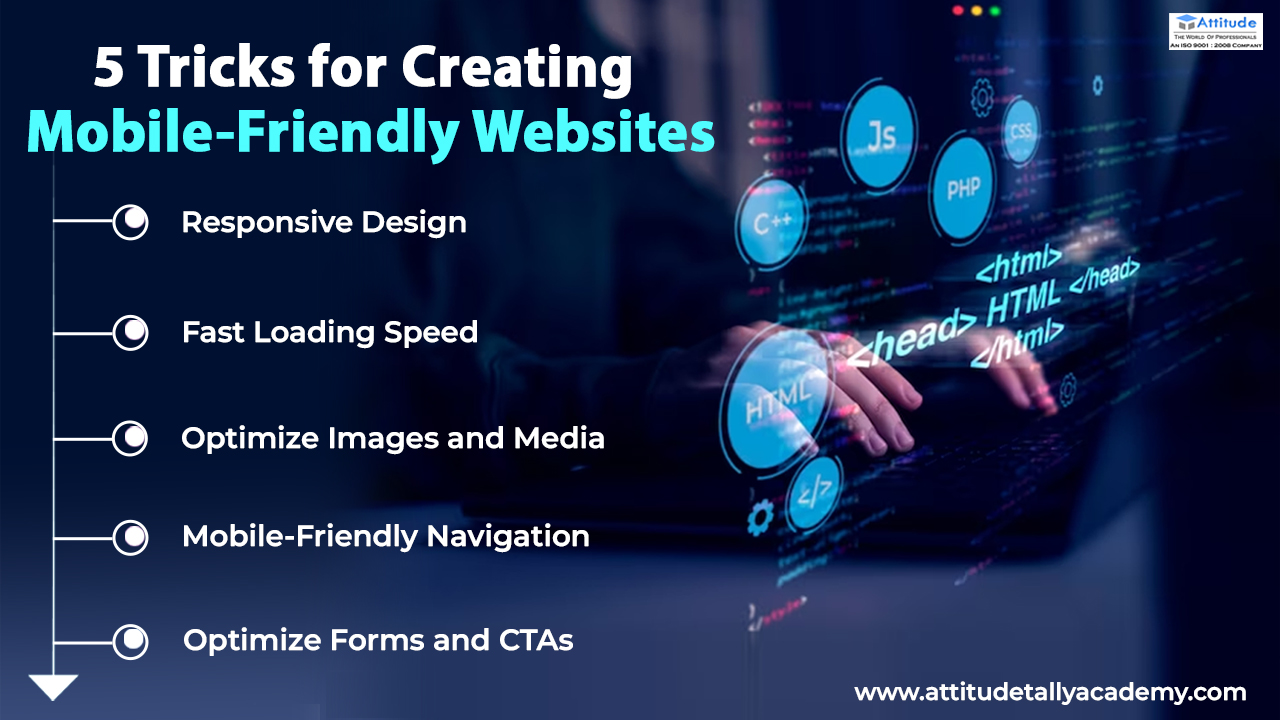Introduction
In today’s digital age, having a mobile-friendly website tips is crucial for engaging your audience and boosting your search engine rankings. With more users accessing websites through their smartphones and tablets, it’s essential to optimize your site for mobile use. Here are five tricks to help you create a mobile-friendly website that stands out.
- Responsive Design
A responsive design ensures your website adapts to various screen sizes and devices. This means your site will look great on a desktop, tablet, or smartphone. A responsive design not only improves user experience but also helps with SEO, as search engines favor mobile-friendly websites. Use flexible grids, fluid images, and CSS media queries to achieve a seamless and consistent look across all devices.
- Fast Loading Speed
One of the most critical factors for a mobile-friendly website is its loading speed. Mobile users are often on-the-go and won’t wait long for a site to load. To boost mobile website speed, compress your images, leverage browser caching, and minimize your code. Tools like Google PageSpeed Insights can help you identify and fix speed issues, ensuring your site loads quickly and keeps visitors engaged.
- Optimize Images and Media
Large images and media files can slow down your website significantly. Optimize your images by compressing them without compromising quality. Use modern formats like WebP for better compression rates. Additionally, lazy loading can be employed to load images only when they are about to be displayed on the screen. This technique helps in reducing initial load time and improves overall performance.
- Mobile-Friendly Navigation
Navigation on mobile devices should be intuitive and easy to use. Simplify your menu structure and use a hamburger menu to save space and enhance usability. Ensure that buttons and links are large enough to be easily tapped with a finger. Avoid using hover effects that work well on desktops but can be frustrating on touch devices. Clear and straightforward navigation keeps users on your site longer and reduces bounce rates.
- Optimize Forms and CTAs
Forms and call-to-actions (CTAs) are crucial elements of any website. On mobile, they need to be simple and easy to complete. Reduce the number of form fields and use auto-fill options to make it quicker for users to input their information. Make sure your CTAs are prominent and accessible without having to zoom in. Use concise and compelling language to encourage conversions.
Conclusion
Creating a mobile-friendly website is essential for engaging today’s audience and improving your SEO rankings. By implementing responsive design, ensuring fast loading speed, optimizing images and media, creating mobile-friendly navigation, and optimizing forms and CTAs, you can provide a seamless experience for your mobile users. Follow these mobile-friendly website tips to stay ahead in the competitive digital landscape.
By these strategies to boost mobile website speed and create a user-friendly experience that keeps your visitors coming back. Remember, a well-optimized mobile site not only enhances user satisfaction but also contributes significantly to your overall online success. Happy optimizing!
Suggested Link: –




